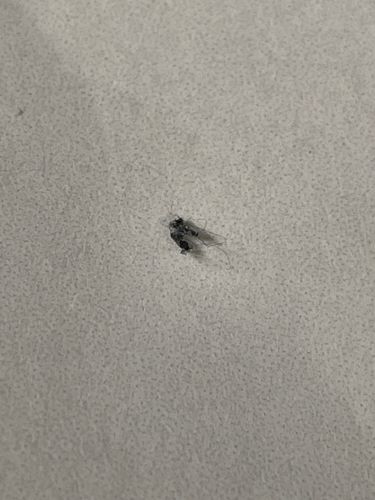Drain Fly (or Moth Fly, Filter Fly, Sewer Fly)
Scientific Name: Psychoda spp. (or Clogmia albipunctata, depending on specific species, but Psychoda is most common for drain flies)
Order & Family: Order: Diptera, Family: Psychodidae
Size: Generally small, adults typically 1.5 to 5 mm (0.06 to 0.2 inches) in length.

Natural Habitat
Larvae thrive in stagnant or slow-moving water rich in organic matter, such as drains, sewage systems, septic tanks, compost piles, and wet soil. Adults are often found near larval breeding sites, including bathrooms, kitchens, and basements.
Diet & Feeding
Larvae feed on decaying organic matter, sludge, fungi, algae, and microorganisms found in moist environments. Adults generally do not feed significantly or may feed on nectar or other liquids.
Behavior Patterns
Psychodidae larvae are aquatic or semi-aquatic and feed on organic matter. Adults are typically active at dusk and dawn, resting during the day. They have a characteristic jerky flight pattern. Reproduction involves laying eggs in moist, organically rich environments.
Risks & Benefits
Potential risks include being a nuisance, as large infestations can be annoying. While generally not disease vectors, they can potentially transport bacteria from their breeding sites to surfaces. Benefits are minimal from a human perspective, but they play a role in decomposition within their natural habitats.
Identified on: 8/28/2025